
The 2019 edition of the biennial Archiprix International Student Competition has nominated 22 outstanding graduation projects which now have the chance to win the grand prize at the award ceremony on May 3rd in Santiago de Chile. This year's jury included Francisco Díaz, Rosetta Elkin, Marta Moreira, Martino Tattara, and Sam Jacoby.
Keep reading for a small selection of our favorite nominated submissions from architecture, urbanism, and landscape architecture graduates from around the world.

SYNTHETIC CULTURES:
Scenes from the Post-Anthropocene
Gary Polk,
University of Pennsylvania, USA
Project excerpt: "This thesis tackles the sphere of non-human culture within the realm of architecture. It investigates design from the ontology of architectural characters by harnessing the behaviors, mechanisms and new spatial realms that can occur from human, environmental and character interfaces, specifically that of the six designed characters: the Transfer Station, Kiln, Buoyant, Umbrella, Thermal Mass and Ark. Furthermore, it explores the cultural repercussions of these objects through two separate but eventually intertwined fictions — whether it is their influence on human society, or their ability to manifest their own culture by derivatives that develop beyond human control." — read more
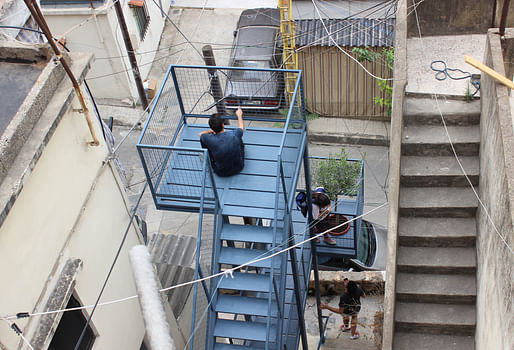
185 EN-COUNTERS:
In Karm El-Zeitoun
Mohamad Nahleh,
American University of Beirut, Lebanon
Project excerpt: "From the narrow balcony of a house to the streets of the city, the study follows the escape of a migrant domestic worker after she used her appropriated space to silently challenge the environment that was forced upon her. By adopting lessons extracted from this narrative, the investigation records various occurrences of dwellers who use their spaces and programs to react to their surroundings." — read more

FROM RELIGION TO EVERDAY LIFE:
The Renewal of ShiMa Town, ZhangZhou, China
Chen YANG, Jianyun CAI,
Huaqiao University, China
Project excerpt: "The design is located in Shima Town, Zhangzhou, Fujian Province, China. Its rich marine culture makes its religion diversified. Through the research, we find that 41 religious spaces are closely related to the daily life of the residents. Their lives revolve around religious culture. We try to classify and analyse the various religious spaces according to certain indicators. We try to start from the needs of the city, the community and the streets and alleys, and at different levels." — read more
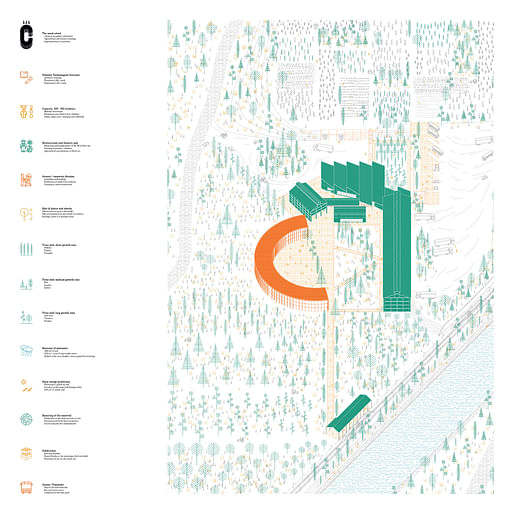
CHARLEROI WOOD CITY
Henri Vantorre,
Université Catholique de Louvain U.C.L., Belgium
Project excerpt: "The project is located on the Porte Ouest, a huge urban industrial wasteland in Belgium's third largest city, Charleroi. The relocation of the site's industries has led to an increase in unemployment and a serious economic crisis. Today, Charleroi is trying to change its image." — read more
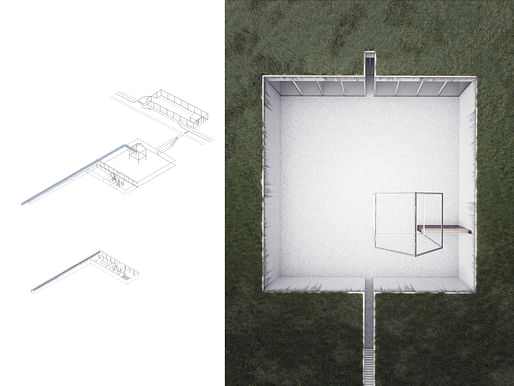
KENOPSIA : SARAJEVO WAR TUNNEL MUSEUM:
Detouristifying the Traumascape
Ena Kukić,
Technische Universität Graz, Austria
Project excerpt: "The Sarajevo Tunnel is a passage constructed in 1993, during the Siege of Sarajevo. It was built under the airport runway to link the besieged city of Sarajevo with the Bosnian-held territory on the other side. After the war, it was turned into an unofficial museum, later touristified and misrepresented by the authorities, while its content remains politically controlled and original artefacts improperly managed, offering visitors a false promise of first-hand experience." — read more
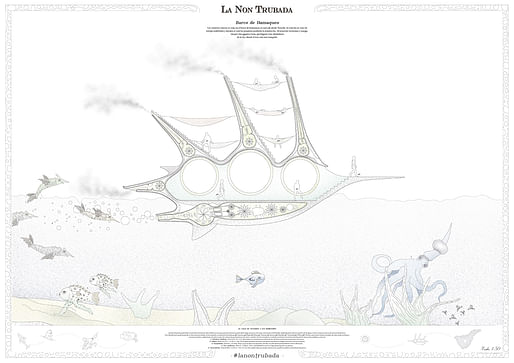
LA NON TRUBADA
Mariano J Vilallonga,
Universidad Europea de Madrid, Spain
Project excerpt: "The Island of San Borondón is a popular legend from the Canary Islands about an island that has appeared and disappeared over centuries. The ‘eighth’ Canary Island has been seen, mapped and photographed by many. Even some people claim to have been in it, despite the fact that its existence was never recorded. From the compilation of existing documentation, it was decided to build the island on the back of a whale 9 km long. Once the island is built, the fauna and flora of the place are recreated, as well as endowing it with livable artifacts." — read more

OF BIOLOGICAL AND DIGITAL CORPOREAL EXCRETA:
Combined Sewage and Data Treatment Landscape
David Wirth,
KU Leuven, Belgium
Project excerpt: "Trump Tweets, memes, hashtags, fake news: the internet has become a drain for futile information. And when one encounters an enormous sewage treatment infrastructure gobbling up all the excretion by millions of people, it becomes clear that the internet is a sort of waste treatment infrastructure too. Organic sewage and ‘digital sewage’, faeces and data. Those two entities share a surprising number of similarities, which are elaborated, exposed, compared, combined and interwoven: this to question our valuation of and relationship with the massive amounts of digital and biological excretions we constantly and unconsciously produce." — read more
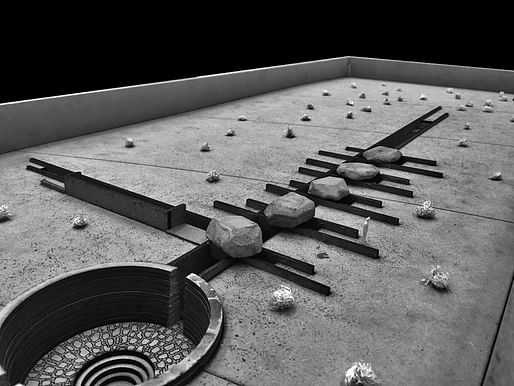
SELK'NAM MEMORIAL ROUTE
Ignacio Lira,
Universidad del Desarrollo, Chile
Project excerpt: "The project was born from an investigation into the Selk'nam people (indigenous people from Tierra del Fuego in southern Chile) and how this ethnic group was exterminated by the owners of the Magellan estates. The architectural concept corresponds with the study of the traces and how they configure spatial relationships in the land. Through this mantra, the natural and artificial traces of the Tierra del Fuego are studied, and in parallel the Selk'nam body make-up is studied." — read more

TRYOUTS ON LIVING IN THE CITY: FOUR POSSIBLE HOMES
Liran Messer, Stav Dror,
Bezalel Academy of Art and Design, Israel
Project excerpt: "The project seeks to deepen the knowledge of housing in the city today, through an understanding of the home as an unattainable thing alongside changing ways of using the city. Observation and documentation of daily activities, objects and various patterns of use of the home and the city allow us to neglect the concept of the home as a term and represent it as a flux of events, actions, places and objects." — read more
![NORTHERN CLOUD: Reshaping the [non]Architecture of Data Centres | Mark Melnichuk NORTHERN CLOUD: Reshaping the [non]Architecture of Data Centres | Mark Melnichuk](https://archinect.gumlet.io/uploads/tc/tco6t3tack4050ou.jpg?fit=crop&auto=compress%2Cformat&enlarge=true&w=514)
NORTHERN CLOUD:
Reshaping the [non]Architecture of Data Centres
Mark Melnichuk,
McGill University, Canada
Project excerpt: "In their current state, data centres are anonymous warehouses, consuming an enormous amount of energy to serve the world’s endless data demands. Growing at an unsustainable pace, data centres also have underlying negative social impacts on surrounding areas. Data companies are relocating north for the cold weather and cheap renewable energy but offer little to local communities in return. In an Icelandic context, the Northern Cloud is an architectural response to an infrastructure typology usually devoid of design, addressing both environmental and social sustainability." — read more
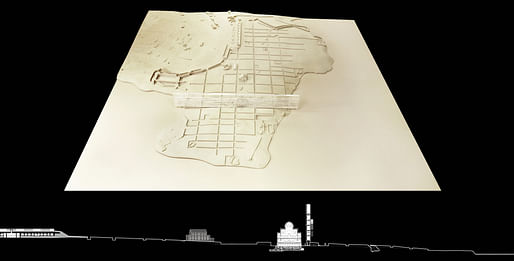
UN-UNITED NATIONS HEADQUARTERS:
Neutral Ground for Discussing the Morality of Opposing Political Systems
Lesia Topolnyk,
Amsterdam University of the Arts, Netherlands
Project excerpt: "The research undertaken in this thesis examines the new opportunities emerging within the interlocking realms of politics and architecture. The author explores the role of architecture in absorbing the conflict situation and fostering its fruitfulness within the divided society. The growth of the European Union and ambitions of the Russian Federation have turned the Crimean Peninsula into the greatest European geopolitical crisis since the Cold War. The following socio-political upheavals set the stage for a testing ground close to the origins and the inner world of the Ukrainian/Russian author. Could Crimea, instead of being a zone of avoidance it is now, become a driving force for the conflicting systems?" — read more
For the complete list of 22 nominated projects this year click here.

Land Art Generator Initiative 2025 Fiji: Climate Resilience for Island Communities
Register/Submit by Mon, May 5, 2025

MICROHOME Kingspan 2024/25
Register by Thu, Feb 13, 2025
Submit by Tue, Mar 18, 2025
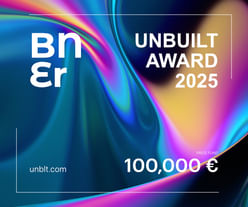
100,000 € Prize / Buildner's Unbuilt Award 2025
Register by Thu, Oct 30, 2025
Submit by Thu, Nov 20, 2025

Kinderspace: Architecture for Children's Development #2
Register by Thu, Jan 16, 2025
Submit by Mon, Jun 16, 2025
No Comments